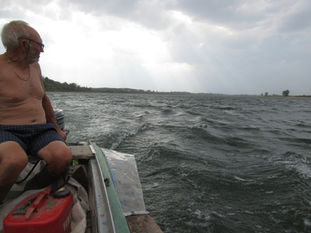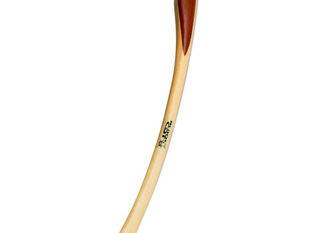
There are many ways in which human affairs affect animal life – as all life on the Planet. We know about long-term events like the disappearance of entire species. Foragers like jackals, however, tell us a lot about the particulars of the process – how daily human affairs impact upon animal life.
This is because foragers live so close to humans. In the last post we told you how a chain of events, beginning with a human tragedy in Budapest, reached the life of a jackal family living hundreds of kilometers away.
this post is about connections between humans and animals which flow through another medium: not through humans damming rivers, but through their industrial grazing of cows.
The connection through cows has at least two aspects. The first one engages considerable attention of biologists at present, namely whether the current jackal colonization of ever-greater parts of Europe holds dangers for livestock. We partly touch on that problem here. What will be discussed at greater length will be how human life connects with that of jackals through stock-breeding. There are details in this, hitherto unobserved (and, very likely, not considered at all).
But first a few words about the context.
The grazing range and the herd
In a previous post (Families and Territories) we told you about the jackal neighbours of Boldy’s family. The nearest was upriver, a kilometer away from Boldy’s: the Topolite family. Their focal resource was the camp-site Topolite (The Poplars), some six km upriver. (In Fig. 1 marked with a purple photo pin)
On the other site, four km downriver, there lived the Pomodiana family. Their main foraging spot was the guest-house Villa Pomodiana at the old fishing port of Stanevo. Then in the hinterland closer to the village of Stanevo there was the Vineyard family, whose foraging spots were scattered around the industrial vineyard at the outskirts of the village.
In Fig. 1 below, the home-bases of all the four families are given in relation to the pasture-lands of a big herd of freely grazed cows. The yellow perimeter line marks an electric fence. The whole area is of some 1.5 sq. km., with a perimeter length of slightly over 8 km.

The history of that bit of land is interesting.
Before the advent of collectivized agriculture at the end of the 1940s, the land was a mosaic of hundreds of private vineyard plots owned by the villagers of Stanevo. (In those times, Stanevo was a big and thriving village of 1,400 inhabitants, down to 150 at present.)
Socialist collectivized agriculture turned the vineyard plots into peach and apricot orchards whose total form and size were practically identical with the plot outlined in Fig. 1.
The post-1989 political changes affected the terrain once again. The Cooperative Farm was liquidated and the orchards abandoned. Towards the end of each summer, forest-fires raged through the rapidly degrading orchards. Many believed the fires were started by local people whose aim was to gather free fire-wood from half-charred trunks.

The burning of the orchards curiously coincided with the appearance of jackals. Each spring new growth of bush and brambles enveloped the charred trunks. ‘It is a jungle now where the orchards were,’ the villagers bitterly commented. ‘A jungle with jackals howling all night long.’
The period of the 1990 and early 2000s was thus experienced as a time of ruin, crime, and the overtaking of the land by jackals. Their image – rather sinister in the popular imagination to begin with – was additionally tarred as animal embodiments of ruin, lawlessness, and crime.
Then a change occurred once again. A big farming concern was established near Stanevo – BOMAR TRADE Ltd. The land became theirs. What the new private owners (locally called ‘agri-millionairs’) did was to cut down the ‘jungle’ and mulch it with powerful machinery.

An electric fence was installed all around the perimeter. The age of stock-breeding of scale began with letting a big herd of cows inside. That happened in 2018.
By that time, the four jackal families mentioned earlier on (Boldy’s, Topolite, Pomodiana, and Vineyard), had already been well-established. Below we’ll show how they connected with the new developments.
The cowherds
The relation was not uncovered directly. That happened with the help of the cowherds.
The ‘agri-millionaires’ had hired a family of Roma people who were responsible for the general upkeep of the herd and the fence. They also watered the animals at the river, and distributed bales of straw. Apart from that, the herd grazed freely.
An important point here is that the herd also freely reproduced. There were seven bulls with the cows and calving happened directly on the range.
In conversations with the herding family, my father’s principal question was: did they register loss of newborn calves caused by jackals? Todor (Tosho), who was the eldest of the group and acted as head-herder, driver, and electrician, gave the following answer:
‘No, there is no perceptible loss. The jackals will take a newborn calf, certainly, but it has to be alone, without the mother. Sometimes they happen to be left for a time by the mothers and then they may start wandering in the bush by themselves. If the jackals find them, they would certainly take them. In all events, when giving birth, a cow usually finds a secluded place, away from the rest. A newborn may also be taken as the cow would not be able to ward the jackals off. But on the whole – no, we can’t say that jackals are taking calves in a big way. There is a vet who checks on reproduction and he says the same: that the herd is growing as planned.’

This is the first plateau from the top of the bluff (right). (My father has taken the bike for his weekly trip for groceries from Kovachitsa)
Here is a curious detail which I learnt from my father, and my father - from the herders: when cows give birth in a cowshed, they usually eat the placenta. However when calving was out in the open the mother would shed the placental membrane at the spot of delivery and leave it there. The placental membrane itself could weigh somewhere between 5 kg to 10 kg and is rich in blood. This makes it a delicacy for both the herders' dogs and our jackals. Whoever finds it first is in for a protein-abundant feast which may explain why the jackals don't go after the newborn calf.
This also explains why senior jackals’ faeces would be so black at times. My father compared them with those left by the dogs of the herders when, as the herders reported, they had managed to get at a placenta heap ahead of the jackals. Their faeces were of the same very black colour, suggesting a lot of blood in what had been eaten.
Then there was the incident of the summer of ’21 – a cow had died while delivering out there on the range. It was late July and day temperatures were already in the thirties. The stench spread over the range. Then the jackals stopped visiting my father's bait-site.
The bait-site was left practically untouched, save for Badger Gosho and the rats. It got to the point that my father began leaving soaked oates only for them: there was no one else interested.
The jackals did not touch food at the bait-site for about half a month. They only came down to the river to drink water. In brief, the herd kept the jackals going nicely, and they, on their turn, helped to keep the range clean.

Human affairs (again)
By 2023 my father’s friends from the herding camp began to show signs of restlessness. First the women left, then the crew started working in shifts. Two men would keep camp during the day, and then one stay for the night. This went on for some time, until only the day shift remained. A week passed with the new regime, then suddenly the herders stopped coming. The rumour went around that the agri-millionaires had been miserly with their wages and the Roma family had found better work somewhere upriver.
By and by, the owners hired another crew, who commuted from the village. They drove down to the camp in the morning, saw to immediate chores, and returned to the village at five. An eight to five workday was the new order.
This left the jackals to be masters of the terrain for much more time during the day, as well as all night through. Importantly, there were no dogs now, as also herders’ vans surprising them on the dirt roads. The herd itself began to move in a more compact manner. To spend the night, the herd went deep into dense growth, keeping the calves inside a ring of mature animals, with the bulls outermost. The animals had adopted a feral mode of life.
But then a new development occurred yet again. Humans began poaching on the herd.
This could have been expected given the reality of a freely grazing herd over a territory of 1.5 sq.km. (150 hectares). While the Roma camp was still there, one did not hear about such things. When they left, rumours of poaching on the herd began to circulate.
What my father heard from his village friends ran like this. Two-three men with shotguns would seek the herd – or fragments from it – at nighttime. Once the herd was located and flood-lit, a calf of about 150-200 kg live weight would be selected and shot down. It would be butchered on the spot, but only the haunches and the shoulders were taken away.
It looked as if about 3-4 cases of this type of clandestine culling would occur per summer. (During the winter, the herd was taken to cowsheds near the village of Kovachitsa and kept there until the following spring).
The number of poached cows could be more than the figure given above, it could be less. No one knew for certain as a climate of secrecy prevailed. Accepting a likely figure of three such cases per summer, the amount of meat, offal, hide, etc. which was left to the jackals would be in the region of at least 200 kg. With four jackal families around, of a total strength of 40 individuals, the share for each one could be around 5 kg. For Boldy’s family who were the nearest to a first pick, it could be more. The share was a nice supplement to the general foraging diet from other sources.
The curious thing was that the owners did not take any measures against the poachers. It was possible they considered the losses as negligible, else that they could claim compensation. If so, that could make life easier for them rather than a hide-and-seek game with poachers. No one knew exactly what was on their minds: the world of the agri-millionaires existed in a parallel reality. In any case, it can be expected that given the absence of control, poaching would increase further. The coming summer of ’25 could throw more light on this murky business.
A conclusion to be made at this point is that painting jackals as the ultimate villains in this – and similar – stories is a false track. At the end of the day, stock-breeding in such a context may be better with them around to take care of abandoned and rotting organic matter, rather brand them as criminals and try to exterminate them.
This has been discussed in detail in: Konstantinov, Yulian (2022). Humans, Predators, and State Projects: A Look at the Lower Danube, Northwest Bulgaria, in Planners, Experts, and Bureaucrats: The Transformation of Economy and Nature in European Peripheries, Ştefan Dorondel and Stelu Şerban, eds. Pittsburgh: University of Pittsburgh, pp. 232-252.






